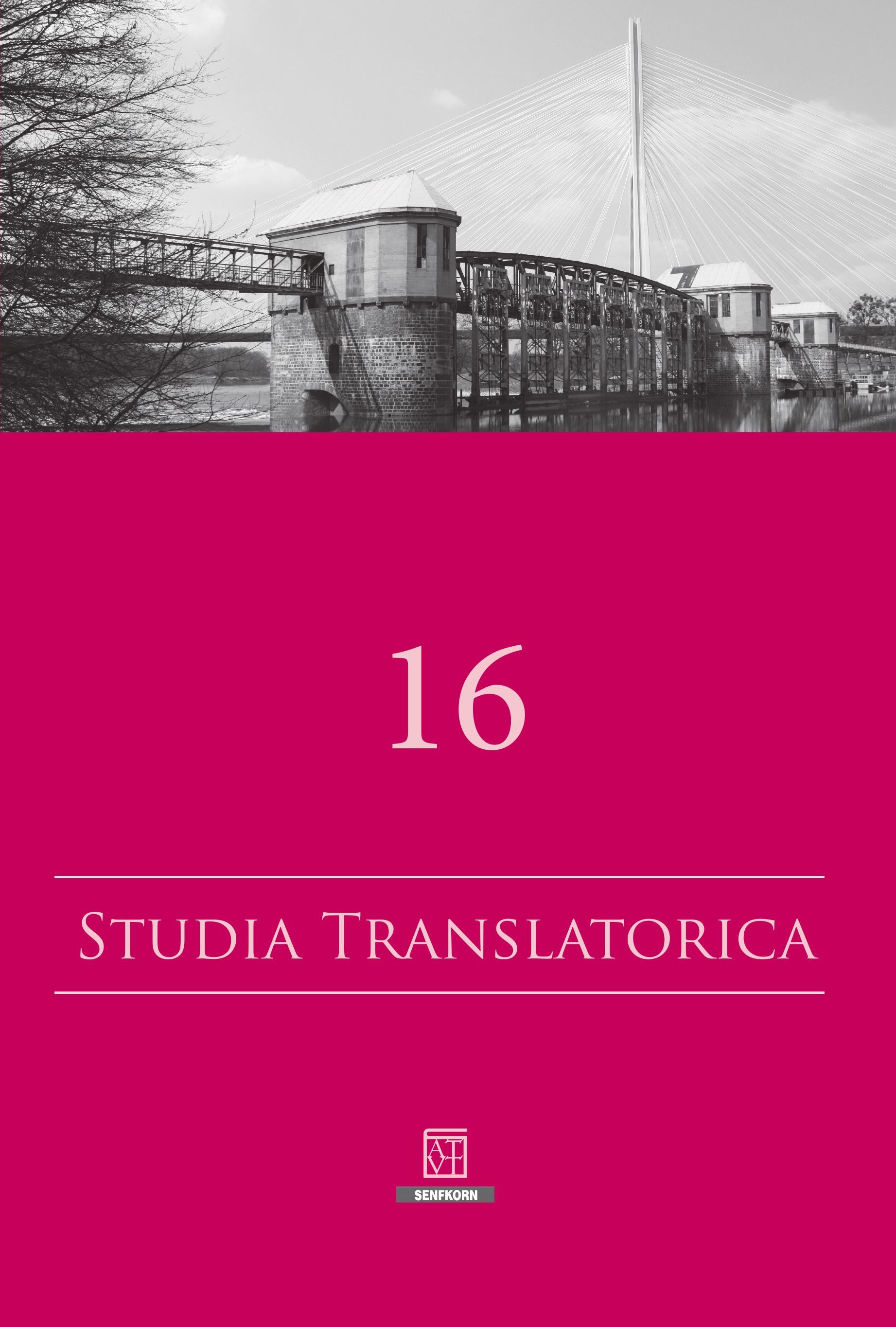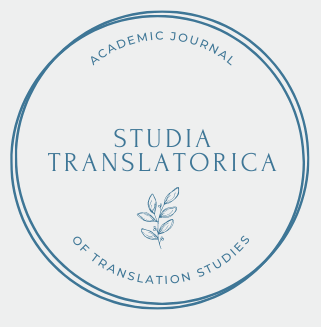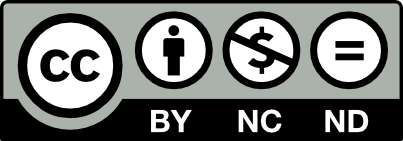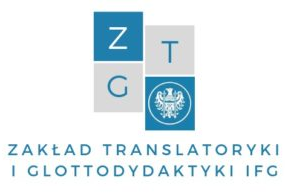
Studia Translatorica
Issue 16 (2025): Nauka o translacji: Paradygmaty – metodologie – metody. Translationswissenschaft: Paradigmen – Methodologien – Methoden. Science of Translation: Paradigms – Methodologies – Methods
Edited by: Anna Małgorzewicz, Paweł Bąk, Michał Gąska, Judyta Kuznik
Still Women’s Language! How foreigners sustain language ideologies in Japanese television / Still Women’s Language! How foreigners sustain language ideologies in Japanese television
DOI: 10.23817/strans.16-1 (published online: 2025-10-21)
Received: 2025-07-11
Accepted: 2025-09-05
Keywords: language ideology, voice-over, interlingual subtitling, women’s language, audiovisual translation
This study analyzes women’s language as represented in the television segment “Shirabete Mitara”, aired by Japanese broadcaster Fuji TV. Drawing on audiovisual translation research and recent developments in Japanese sociolinguistics and media studies, the article examines the interindexical relationships that emerge between the Japanese voice-over and interlingual subtitles used to render the speech of foreign female speakers, together with the ideological portrayals of femininity associated with them. The analysis of the interview segments high-lights not only the discrepancy between the speech style of non-native female speakers and that adopted by Japanese voice actresses, but also a process of hyperfeminization aimed at indexing a set of metapragmatic stereotypes around which the so-called Japanese Women’s Language (“joseigo”) has crystallized. In particular, the study underscores how the iconic bodies of the speakers are instrumentalized as semiotic resources to convey specific ideologies of femininity in Japan, which converge in an adaptation strategy that reinforces gender-based discrimination – a phenomenon still deeply embedded in contemporary Japanese society.
Phraseology at the service of automatic text classification: Computational account of binomials in the company registration discourse with translational implications / Phraseology at the service of automatic text classification: Computational account of binomials in the company registration discourse with translational implications
DOI: 10.23817/strans.16-2 (published online: 2025-10-21)
Received: 2025-03-10
Accepted: 2025-06-03
Keywords: genre prediction, decision tree, predictive model, legal phraseology, digital humanities, computational stylometry
The paper problematises text classification potential of phraseology in the context of methodological research paradigms of digital humanities. Specifically, the analysis discussed in the paper aims at verifying whether four structural features of English legal binomials can construct a statistically reliable genre predictive model, whereby legal texts are automatically assigned to three groups of legal genres, processed through company registration, in a court-based procedure. The computational part of the analysis rests in generating a random decision forest. The candidate terms have been extracted from a corpus of authentic texts, referred to as company registration discourse. The quantitatively most marked patterns are subjected to qualitative analysis involving the examination of the linguistic context, the contextual metadata and the genre requirements. The analytical part is preceded by atheoretical account of the concept of digital humanities with reference to related notions and ahistorical overview of how this discipline evolved. The findings related to the predictive capacity of the model derived are discussed in the context of the translation output, the translation quality and the comprehensibility of legal texts. At this stage the discussion draws on the parallel component of the corpus. The author concludes that legal genres covered by the analysis are relatively schematic and the structural profile of binomials makes up part of some of these schemes. Automatic text classification is possible in some cases. The original generic structure of the texts covered by the analysis is distorted in the translation.
Wisława Szymborska in Ost und West: Übersetzungen im Vergleich / Wisława Szymborska in East and West: a comparison of translations
DOI: 10.23817/strans.16-3 (published online: 2025-10-21)
Received: 2024-12-16
Accepted: 2025-04-14
Keywords: Wisława Szymborska, Jutta Janke, Karl Dedecius, Göttingen approach of comparative translation studies, Dwie małpy Bruegla
In both East and West Germany, Wisława Szymborska was discovered early and published in translations by various translators in numerous journals and anthologies. By 1990, the year of reunification, three volumes of her poems were published in West Germany, translated and edited by Karl Dedecius, whereas in East Germany only one book was published, edited and translated by Jutta Janke. This article offers an analysis of these publications in both German states, focussing on which poems were included in which publications and which poems were not published in either state. Finally, one of the poems, translated and published in both German states, “Dwie małpy Bruegla” [“Brueghel’s two monkeys”], is compared using the so-called Göttingen approach to translation research. This methodological approach assumes that the differences between the source text and the target text can provide indications of the conditions under which the respective translations were written, in order to find out to what extent the translations differ in the Federal Republic of Germany and the German Democratic Republic. Although individual poems might have been chosen for ideological reasons, the assumption that differences in translations of the same poem could be due to ideological factors cannot be confirmed in the case of this particular poem.
Experimentelle Untersuchung des Übersetzungsprozesses aus psycholinguistischer Sicht / Experimental study of the translation process from a psycholinguistic perspective
DOI: 10.23817/strans.16-4 (published online: 2025-10-21)
Received: 2025-02-15
Accepted: 2025-04-22
Keywords: translational experiment, stylistic experiment, free association, equivalence vs. difference, probability predictions, inference, implication
The article presents the translational experiment as a method of studying the translation process and that process in its internal and external form (introspective or prospective as well as retrospective view upon the translation process) by analyzing translator notes or notebooks and translator reports. The essence of the translational experiment establishes the so-called stylistic experiment by Peshkovsky. It always begins when the translator chooses different translation variants, guided by the interpretation of the original. This means that the implicative processes of meaning interpretation always lead to interlinguistic synonymy, which always results in a difference in relation to the original. For translation, this fact always means preventing literalism, that arises from a content or even grammatical imitation of the original, touches on the area of direct equivalence relations and declares the implementation of the stylistic and thus the translational experiment impossible. The stylistic experiment therefore consists in rehearsing various variants, including unsuccessful ones, and in researching the causes of this failure, which explain the success and coherence of a text. This is where the psycholinguistic experiment of free context-dependent or context-bound association comes into play. It is precisely here that the inferential processes of meaning interpretation become visible; the understanding and translation processes rise to the surface of conscious introspection.
Algorytm gatunkowy na zajęciach z tłumaczenia specjalistycznego / Genre algorithm in specialized translation classes
DOI: 10.23817/strans.16-5 (published online: 2025-10-21)
Received: 2025-02-22
Accepted: 2025-05-05
Keywords: genre algorithm, genre approach, specialized translation, medical translation, human eye
The article presents theoretical foundations and practical application of the genre algorithm as a didactic tool in specialized translation classes. Therein attention is paid to they way the genre algorithm functions step by step and how it can be used to enrich the didactic environment with not only textual, but also illustrated and audiovisual materials on differing levels of complexity. The base for the research is formed by sources from the thematic area “The human eye: anatomy, defects and diseases, medical procedures”. As the conclusions indicate, the genre algorithm forms a multileveled framework which allows the students involved in the learning process to enhance terminological competence, develop genre awareness and strengthen the critical evaluation of the resources used in the translation process. Therefore, the paper aims to increase the incorporation of the genre approach in the teaching of specialized translation.
Winzersprache im Deutschen und im Polnischen. Bestandsaufnahme und Vorüberlegungen zu einem zweisprachigen Glossar / German and Polish language of winemakers. The state of research and considerations regarding a specialist bilingual dictionary
DOI: 10.23817/strans.16-6 (published online: 2025-10-21)
Received: 2025-10-08
Accepted: 2025-06-23
Keywords: technical language, winemaker language, terminology, MultiTerm
The specialist language on winemaking has been the subject of numerous studies. There are monolingual dictionaries and lexicons as well as oenological glossaries for the Polish-English language pair, and multilingual ones (in English, German, or French). For the Polish-German language pair, wine terminology can be found in applicable legal regulations such as EU directives or legal provisions, yet there is no commonly known exclusively oenological glossary that could be used for these two languages. This paper aims at presenting the state of research on the specialist language of winemaking in Polish and German. It also depicts methodological and technical considerations on the need and possibility of developing a terminological database that would facilitate the transfer of knowledge in oenology between these two linguistic and cultural areas under study.
Zum didaktischen Potenzial von literarischen Übersetzungsprojekten für die philologische Ausbildung / On the didactic potential of literary translation projects for philological education
DOI: 10.23817/strans.16-7 (published online: 2025-10-21)
Received: 2025-02-23
Accepted: 2025-04-22
Keywords: literary translation, didactic potential, translation projects, translation didactics
The exploration of foreign language literary texts through translations is rarely addressed in research literature. The reason for this likely lies in the fact that such an offering can only be directed at a relatively limited group (primarily linguistically advanced students of foreign philologies), and literary texts are increasingly being displaced from translation seminars due to the growing specialization in technical language and professional profiling of modern philologies. Nevertheless, based on a series of translation projects already carried out, the author claims that engaging with literary texts in a translation-relevant manner within the context of a university (and specifically a foreign philology) offers a number of advantages, which are discussed in more detail using the example of the latest translation project at the Opole German Studies Department (in relation to texts by Vladimir Vertlib). The aforementioned project was implemented within the framework of two courses (translation-relevant text analysis and selected aspects of translation theory and practice) with different focuses: translation-preparatory analysis and research versus translation evaluation and criticism. Starting from an interdisciplinary theoretical foundation (literary studies and didactics, linguistics, and translation studies), the individual methodological steps of the project are presented in the form of examples and selected results are evaluated. Finally, conclusions are formulated regarding the didactic potential of literary translation. Among the most important advantages of literary translation projects is first the possibility of literature and culture mediation of the country of origin as well as the (potential) acquisition of cultural knowledge. Furthermore, the diverse didactic benefits should be mentioned: the promotion of reading and interpretation competence, the development of analytical skills in connection with the determination of translation-relevant text-external and -internal factors, as well as the strengthening of research competence in the receptive phase. In the productive phase, creativity and expressiveness are practiced, and during the evaluation phase, the translation-critical potential can be fostered. Completed projects can also be prepared for (translation) research purposes.
Translational reality and technical documentation: A case of machine-translated online content in Microsoft Azure / Translational reality and technical documentation: A case of machine-translated online content in Microsoft Azure
DOI: 10.23817/strans.16-8 (published online: 2025-10-21)
Received: 2025-02-27
Accepted: 2025-06-20
Keywords: Neural Machine Translation, NMT, technical content, Microsoft Azure documentation, specialist language
Neural Machine Translation (NMT) represents a paradigm that is being integrated within the IT sector, where scalability, consistency, and accessibility are crucial for disseminating vast amounts of technical content to global audiences. While NMT offers rapid production of technical documentation in multiple languages, it raises questions about the quality of machine-translated specialist texts and, in consequence, the quality of specialist knowledge transferred across language communities based on those texts. This paper explores the emergent paradigmatic shift in technical content translation through a comparative analysis of Microsoft Azure’s English-language documentation and its machine-translated counterpart in Polish. The paradigmatic shift from a human-mediated to a machine-enhanced approach prompts an exploration into the evolving dynamics of translation as a practice and a reconsideration of the conceptual underpinnings of translation as a multifaceted phenomenon. The study aims to account for the capacities and limitations of NMT in preserving fidelity and source intelligibility in machine-translated outputs and consequently, to provide insights into the role of NMT in technical contexts.
The embarrassment during interpreting in the courtroom and at the police station / The embarrassment during interpreting in the courtroom and at the police station
DOI: 10.23817/strans.16-9 (published online: 2025-10-21)
Received: 2025-02-24
Accepted: 2025-05-21
Keywords: court interpreting, community interpreting, public service interpreting, emotions in interpreting, embarrassment
This article presents the results of asurvey on feeling of embarrassment in response to phrases of varying degrees of vulgarity and obscenity, as well as the perceived problem when interpreting these phrases during interrogation in court and at the police station. The feeling of embarrassment can, in the author’s opinion, act as ablocker and affect the way in which testimonies are interpreted. Atotal of 99 interpreters of different ages, education and experience participated in the study. Their task was to determine the degree to which they felt embarrassment in response to potentially problematic phrases, as well as to determine whether it would be difficult for them to interpret vulgar and obscene phrases during a trial and during police interrogation. The respondents’ answers were compared according to their age, gender, experience and education. The only variable in which a statistically significant difference was found was the gender of the respondents. The article also discusses the comments of the respondents, who briefly described their experiences in interpreting problematic content and their strategies for dealing with such situations. They also shared their comments on the education process and professional interpreter training.
Creativity continuum in educating video game localizers / Creativity continuum in educating video game localizers
DOI: 10.23817/strans.16-10 (published online: 2025-10-21)
Received: 2025-01-10
Accepted: 2025-06-07
Keywords: game localization, creativity, creativity continuum, video game localization didactics, curriculum
Even though creativity is undoubtedly the most crucial skill of video game localizers, game-specific texts display a remarkable variety and can be arranged on a continuum from the most standard to the most creative. With this in mind, three in-game text categories which undergo localization are postulated: the game world, the game mechanics and the game interface. The external game-related texts which accompany a given game, in turn, are divided into: marketing texts, informational texts and legal texts. These textual categories call for different translation approaches as part of the game localization process: creative, standard or mixed. Moreover, a distinction is made between creative and standard style as well as creative and standard terminology. Creative style is varied and original, whereas standard style is conventional and based on industry standards. Creative terminology contains unique game-specific terms, while standard terminology covers general gaming, platform and genre-related terms. The creative approach incorporates creative style and mostly creative terminology. The standard approach, understandably, encompasses standard style and mostly standard terminology. Last but not least, the mixed approach covers all possible combinations of creative and standard elements. The postulated classification of texts and corresponding approaches are directly linked to prospective game localizers’ competencies and provide abasis for the proposed academic curriculum.
Tendencje rozwoju tłumaczenia prawniczego w Rosji i Ukrainie / Trends in the development of legal translation in Russia and Ukraine
DOI: 10.23817/strans.16-11 (published online: 2025-10-21)
Received: 2025-02-28
Accepted: 2025-06-27
Keywords: legal translation, legal language, Russian and Ukrainian translation studies, didactics of translation
The article is devoted to the analysis of trends in the development of legal translation in Russia and Ukraine. The purpose of this paper is also to present publications in Russian and Ukrainian on legal translation from both theoretical and practical aspects. In these two countries, legal translation has a history of more than 1,000 years. Its origins go back to the Kyiv Rus. For many centuries, legal translation was mostly a practical activity. The article highlights that in Ukraine, the development of legal translation is related to the development of Ukrainian statehood, the Ukrainian language, and the status of the Russian language in this country. After the collapse of the Soviet Union, there was a revival of economic, political, and other contacts between people speaking different languages, which required legal regulation. This gave rise to theoretical considerations of this type of specialised translation. From the very beginning, the theory of legal translation in Russia and Ukraine was based on general translation theories. According to the results of the analysis of publications in the field of legal translation, it can be concluded that textbooks are published much more often than theoretical works. They aim to develop translation competence in the following languages: English-Russian/Ukrainian and German-Russian/Ukrainian. This is related to the increasing demand for professional legal translators.
Od krytyki przekładu do kształcenia tłumaczy [Bończa Bukowski, Piotr de/ Kita-Huber, Jadwiga (red.) (2024). „Współczesna myśl translatologiczna w krajach niemieckojęzycznych”. Kraków: Wydawnictwo Uniwersytetu Jagiellońskiego. 295 S.]
DOI: 10.23817/strans.16-12 (published online: 2025-10-21)
Received: 2025-03-22
Accepted: 2025-04-30
Keywords:


